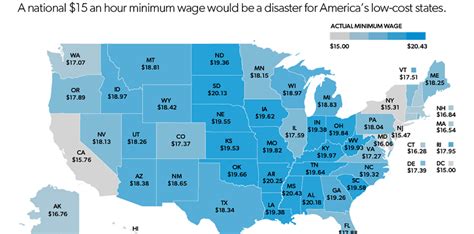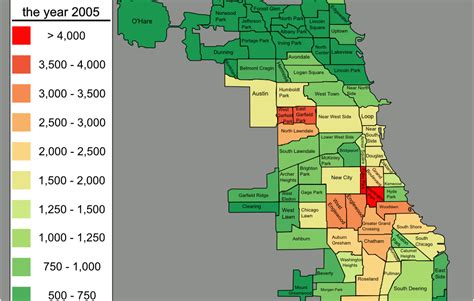As of 2025, a few states have decided to increase the minimum wage to $15 an hour. This is a major step towards providing better wages to low-income workers. The states that have set $15 an hour as the minimum wage include California, Massachusetts, New Jersey, Illinois, Maryland, Connecticut, and New York.
In California, workers will be able to receive a minimum wage of $15 an hour starting in 2025 for employers with 26 or more employees. For employers with fewer than 26 employees, the minimum wage will be set at $14 an hour in 2025 and will reach $15 an hour in 2025. In Massachusetts, the minimum wage will reach $15 an hour in 2025.
In New Jersey, workers will be able to receive a minimum wage of $15 an hour starting in 2025. In Illinois, the minimum wage will gradually increase until it reaches $15 an hour in 2025. In Maryland, workers will be able to receive a minimum wage of $15 an hour starting in 2025. In Connecticut and New York, the minimum wage will gradually increase until it reaches $15 an hour in 2026.
The states that have set $15 an hour as the minimum wage are taking a major step to help low-wage workers. This higher minimum wage will help workers to make ends meet and cover basic needs. It is important to note that the minimum wage will continue to be adjusted to keep up with the cost of living.
Exploring The States With A $15 Minimum Wage
Exploring the states with a $15 minimum wage is a great way to learn more about the differences between states. Some states have adopted this policy, while others are still debating or have yet to make a decision. This article will provide an overview of which states have adopted a $15 minimum wage, what it means for those states, and what you should know if you are considering living in one of them.
Currently, there are nine states that have a $15 minimum wage. This includes California, New York, Massachusetts, Oregon, Washington, Maryland, Connecticut, Illinois, and New Jersey. The states of Vermont, Arizona, Colorado, and Florida have passed legislation to gradually raise their minimum wage to $15 per hour by 2025.
The impact of this policy varies from state to state. In states where the minimum wage already exceeds $15, such as California, New York, and Oregon, it provides a boost to the economy as workers will have more buying power. In other states, like Arizona, Colorado, and Florida, it is expected to have a more modest impact, as the increase is gradual over several years.
For those considering living in one of these states, there are a few things to keep in mind. In most cases, the increased wage will likely be offset by higher costs of living, especially in California. Additionally, some employers may reduce hours or change hiring plans in order to absorb the additional costs. This could make it more difficult for workers to find jobs in certain industries.
Overall, exploring the states with a $15 minimum wage can be a great way to learn more about the differences between states and how they are dealing with the issue of low wages. It’s important to keep in mind the impact the wage increase will have on the economy and the job market in each state.
State:
| State | Minimum Wage |
|---|---|
| California | $15 |
| New York | $15 |
| Massachusetts | $15 |
| Oregon | $15 |
| Washington | $15 |
| Maryland | $15 |
| Connecticut | $15 |
| Illinois | $15 |
| New Jersey | $15 |
| Vermont | $15 by 2025 |
| Arizona | $15 by 2025 |
| Colorado | $15 by 2026 |
| Florida | $15 by 2026 |
Debating The Necessity Of A $15 Minimum Wage Across The Country
Recently, the debate over the necessity of a $15 minimum wage across the country has been gaining traction. While some states have already implemented the $15 minimum wage, others are still considering the implications of such a policy. As the debate continues, it’s important to understand the pros and cons of a $15 minimum wage.
The primary argument for a $15 minimum wage is that it will help raise the living standards of low-wage workers and reduce poverty. Supporters of the policy argue that a higher wage will allow workers to pay for basic necessities and have more disposable income. Additionally, they argue that businesses will benefit from increased consumer spending.
On the other hand, opponents of the policy argue that it will lead to job losses, as businesses will be unable to afford the higher wages. Additionally, they argue that the policy could lead to higher prices as businesses raise prices to compensate for the higher wages.
At present, several states have already implemented the $15 minimum wage, including California, New York, and Washington. Additionally, many cities and counties across the country have also adopted the policy. To date, no federal legislation has been passed to establish a nationwide $15 minimum wage.
| State | Minimum Wage |
|---|---|
| California | $15/hr |
| New York | $15/hr |
| Washington | $13.50/hr |
The debate over the necessity of a $15 minimum wage is ongoing, and it’s not likely to be resolved any time soon. While supporters of the policy argue that it will help raise living standards and reduce poverty, opponents argue that it will lead to job losses and higher prices. Ultimately, it’s up to state and local governments to decide the fate of the policy.
 Road Topic Tourism & Travel
Road Topic Tourism & Travel




